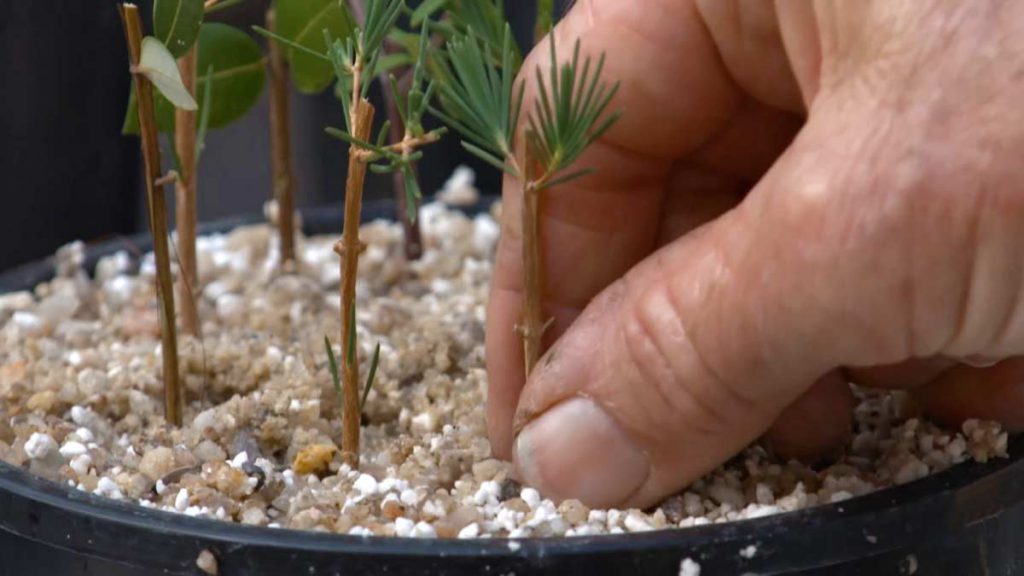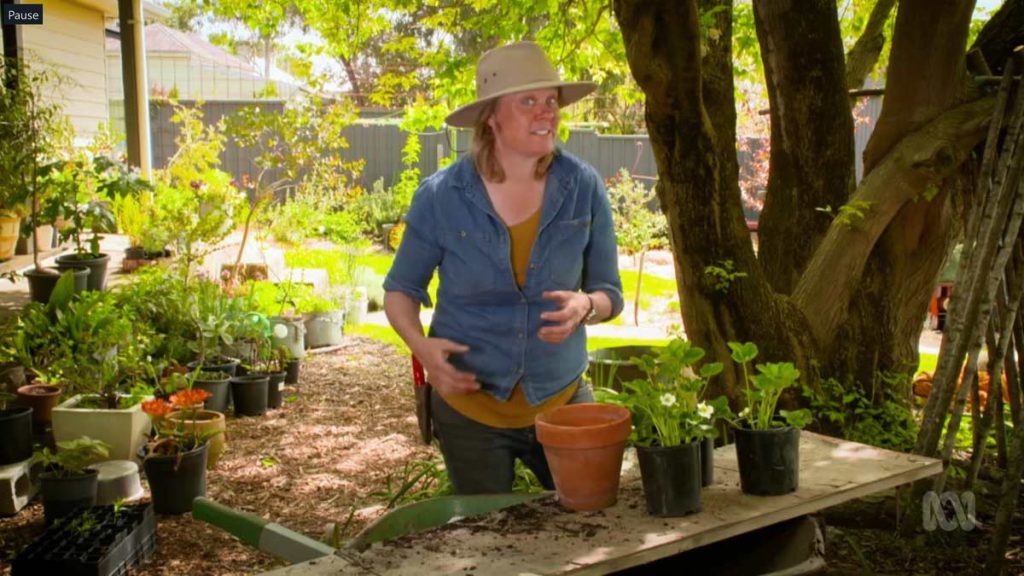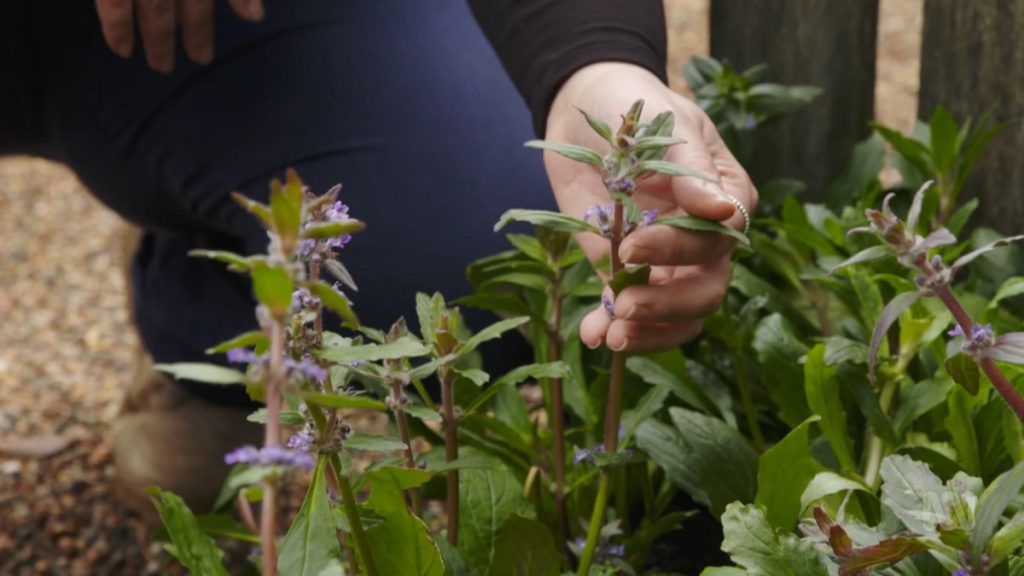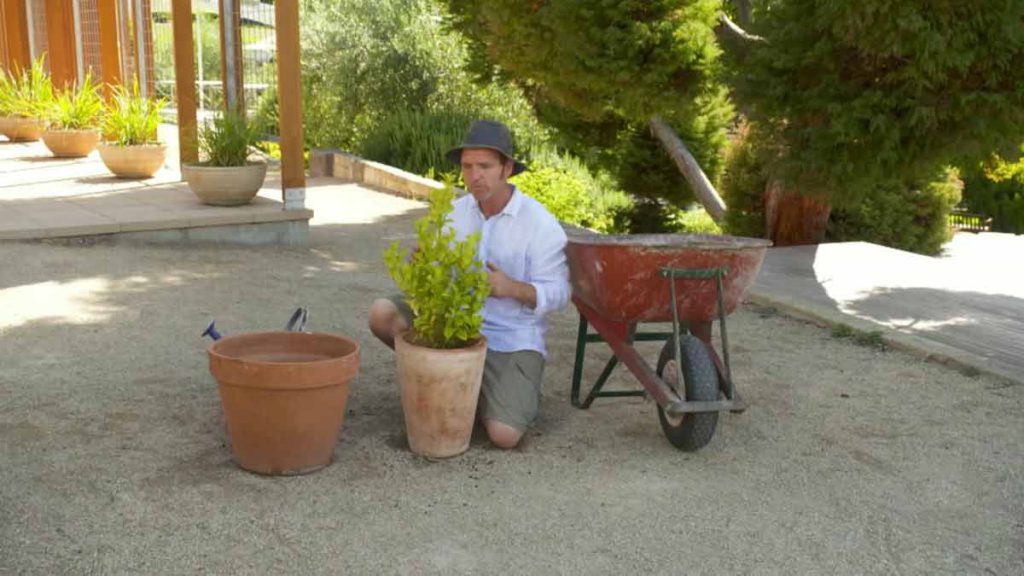Gardening Australia episode 25 2021: Costa Georgiadis explores an extensive Sydney garden, Clarence Slockee looks at new release plants, Tino Carnevale learns how to grow tea, and Sophie Thomson visits a bamboo orchard planted for pandas.
Inspiring, entertaining and full of practical advice, join Costa Georgiadis and the team as they unearth gardening ideas, meet avid gardeners and look at some of the most inspiring gardens from across the country.
Gardening Australia episode 25 2021
Bayview Bliss
Costa meets a couple in Sydney who have created a diverse garden to explore their own unique interests and provide a haven for the whole family.
On a sandstone escarpment above Sydney’s Northern Beaches, Nancy and Ted live on a sloping 1-acre block overlooking Pittwater. Over 20 years, as they discovered new plants, they added new sections to the garden. Their interests are reflected in their club memberships: Cottage Garden club, Tropical Plant Society, Orchid Society, Australian Plants Society, plus Ted’s revegetation work at Stony Range.
When they moved here in 2000, Ted had to clear the block of weeds and rubbish: “There was no real garden as such, just bush and stuff that had been dumped in the bush – bricks and old branches – even an old water tank.” “Things just evolved,” says Ted. “We always had natives, then the rainforest area came, then the cottage garden, then the hoyas and putting in shade houses for things like that.”
The site is very rocky, and they’ve made a feature of the sandstone in the bushy bits. The poor soil suits native plants best and the largest section (about 1/3) of their garden is dedicated to them. It includes stately Angophoras and eucalypts.
FAQs – Ornamental grape leaves | Earthworms vs compost worms | Pruning
Gardening Australia presenters answer commonly asked gardening questions.
Test for the Best – Gardening Australia episode 25 2021
Clarence visits a trial garden at the Royal Botanic Garden Sydney to see the work they are doing to identify the most reliable new release plants for Sydney.
One of the most exciting parts of gardening is going to the nursery and finding something to new to try out, whether it’s a whole new species you haven’t come across before, or a different form and flower colour of a much-loved favourite. But how are these plants selected, what’s the process of getting them into production before you buy them? There’s a whole lot of love, horticultural science, and dedicated gardeners making sure new plant varieties are put to the test so you can spend more time enjoying them rather than just trying to keep them alive!
The Trial Gardens within the Royal Botanic Garden Sydney is one place helping to test the quality and suitability of new cultivars before they head to the nursery. The lawns of the Trial Gardens are interspersed with 11 neatly curved beds containing a diverse mix of plants. From swathes of brightly coloured dahlias, salvias, and petunias, to ornamental grasses and succulents, and a vegetable plot with tepees for climbers and bushes of eggplant, okra, and chillies.
Bougainvillea in Pots
Jane shows how to grow Bougainvillea in a pot. It’s hard to beat a bougainvillea for bright, vivid colour during the warmer months. They love to scramble up walls and trellises and – if you let them – can take up a lot of space! But what if you have a small garden and would still love to grow a bougainvillea? Well, here’s an idea – try a dwarf variety in a pot!
Dwarf bougainvillea are just as flamboyant as the larger varieties and are available in all kinds of colours but only grow up to about 1-2 metres high so will stay nice and compact. What looks like flowers on the bougainvillea are actually brightly-coloured bracts – or modified stems. They’re protecting the real flowers which are the tiny, white little things poking out from the centre.
Another handy feature of dwarf varieties is that the thorns – which are found on the stems – are smaller and not as sharp as the full-sized ones. So, how do you go about repotting a bougainvillea? Firstly, it’s best to choose a pot that’s the next size up. The roots don’t mind being a bit restricted, so it won’t need repotting again until it really fills this one up.
Tea-Licious – Gardening Australia episode 25 2021
Tino tracks down Tasmania’s very own tea plantation and finds out what it takes to grow the perfect cuppa.
Australians love a cuppa – popping the kettle on and sitting down with a nice cup of tea is a daily ritual for many, with over 16 million kilos of tea consumed in this country annually. But, despite such tea-rrific nationwide tea consumption, the bulk of the tea consumed in our cuppas is imported, with domestic production of this brilliant beverage relatively small. But just 20 minutes out of Hobart is a small family farm and a couple of horticultural scientists brewing up a brilliant local tea industry.
Fungus in Mangoes
Jerry explains how to prevent fungal disease in mangoes. Every year, you can pretty much guarantee someone, somewhere, will be looking forward to a great harvest of mangoes, custard apples or avocados, and when they go to pick them, they find the fruit are bruised and spoiled and not worth eating.
Anthracnose disease is the common cause, and the problem with this disease is you can’t start controlling it when you see the symptoms on the fruit. Control starts when the plants are in flower and the sort of control Jerry prefers is to use is an organic fungicide called wettable sulphur.
You apply the wettable sulphur in the morning before the bees wake up and repeat applications once a month all the way through spring.
You’ll often see that copper is suggested as a traditional organic remedy for the same disease, and it works just as well, but copper is a heavy metal and it accumulates in the soil with regular spraying, and that’s not healthy for your soil or your food, so Jerry’s advice is to use wettable sulphur to control anthracnose.




